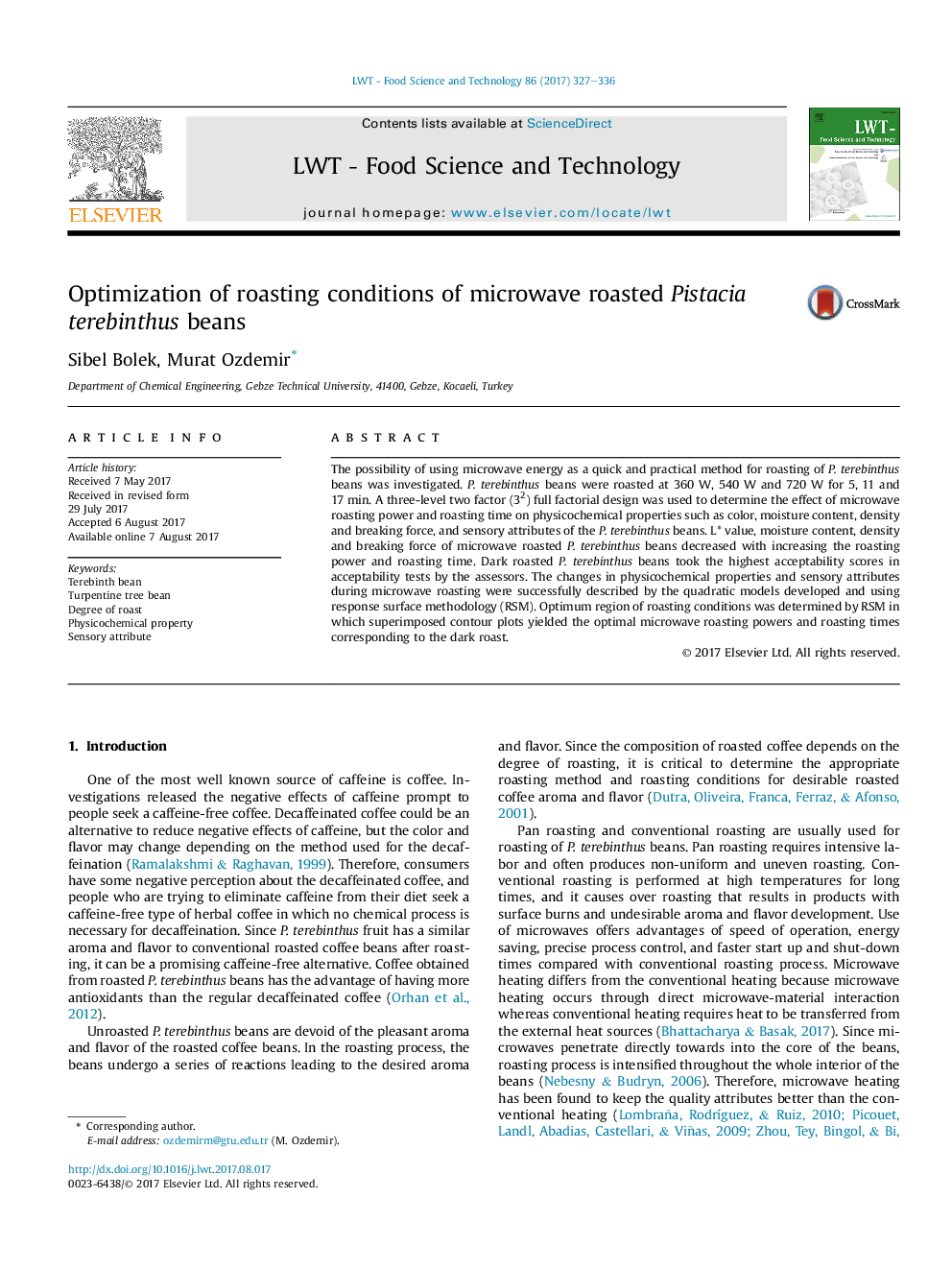| Article ID | Journal | Published Year | Pages | File Type |
|---|---|---|---|---|
| 5768693 | LWT - Food Science and Technology | 2017 | 10 Pages |
â¢Microwave power and roasting time were important factors in microwave roasting.â¢Microwave roasting provided easy and quick roasting for P. terebinthus beans.â¢Roasting power and roasting time influenced physicochemical properties.â¢Dark roasted P. terebinthus beans took the highest scores in acceptability tests.â¢Optimum region for microwave roasting of P. terebinthus beans was determined.
The possibility of using microwave energy as a quick and practical method for roasting of P. terebinthus beans was investigated. P. terebinthus beans were roasted at 360 W, 540 W and 720 W for 5, 11 and 17 min. A three-level two factor (32) full factorial design was used to determine the effect of microwave roasting power and roasting time on physicochemical properties such as color, moisture content, density and breaking force, and sensory attributes of the P. terebinthus beans. L* value, moisture content, density and breaking force of microwave roasted P. terebinthus beans decreased with increasing the roasting power and roasting time. Dark roasted P. terebinthus beans took the highest acceptability scores in acceptability tests by the assessors. The changes in physicochemical properties and sensory attributes during microwave roasting were successfully described by the quadratic models developed and using response surface methodology (RSM). Optimum region of roasting conditions was determined by RSM in which superimposed contour plots yielded the optimal microwave roasting powers and roasting times corresponding to the dark roast.
